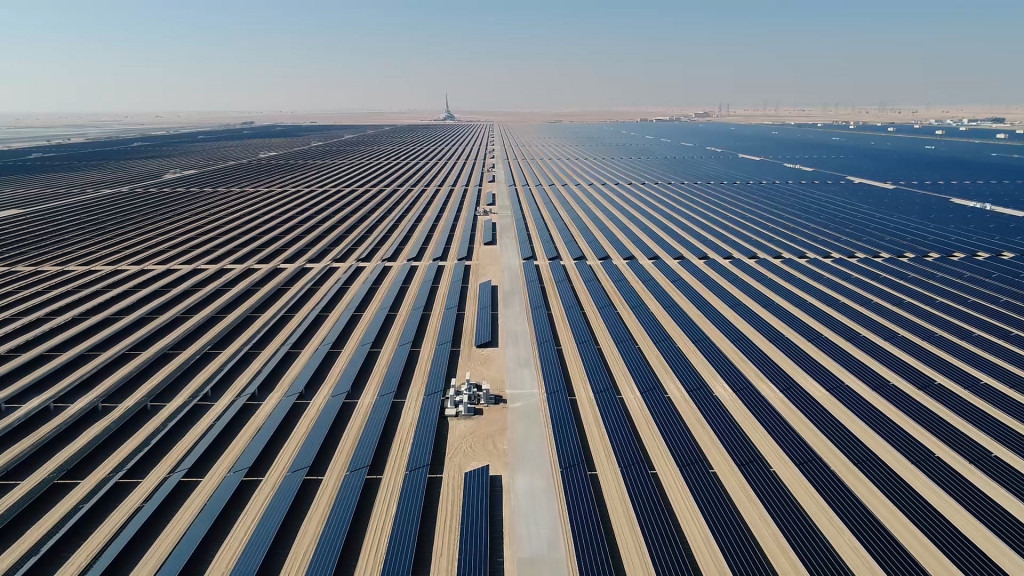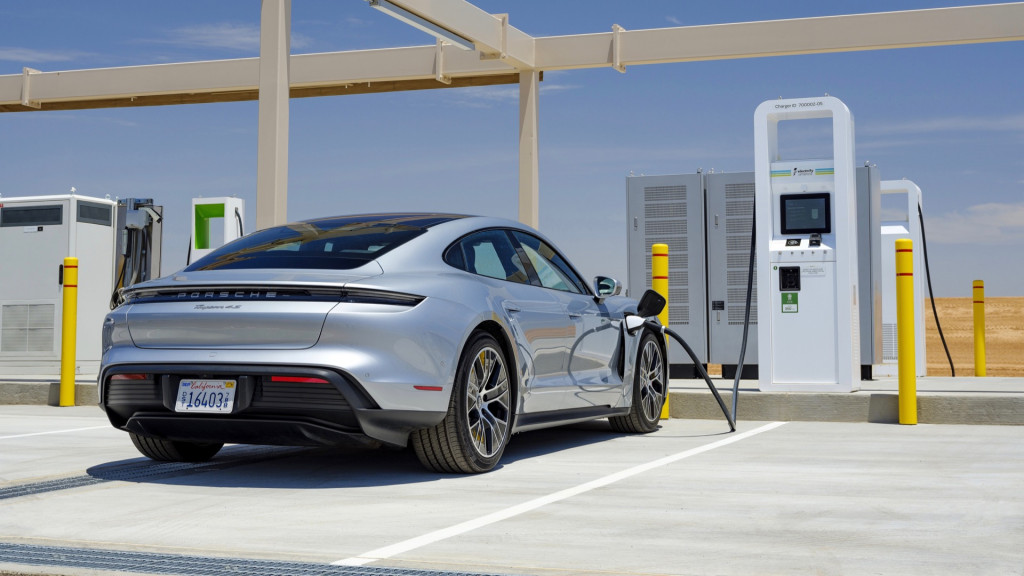EVs could help hasten the ongoing transition from fossil fuels to renewable energy through the end of the decade, according to a new report from the International Energy Agency (IEA).
The IEA predicts that more than half of the world’s electricity will come from low-emission sources by 2030, and that demand for coal, oil, and gas will have also peaked by then. Greater use of renewables will be needed not only to reduce carbon emissions, but to meet growing demand for electricity from EVs and other sources like data centers, according to the report.
Current policies are on track to add the equivalent of Japan’s demand use to global electricity use each year. But low-emission sources, led by renewables, are expected to outpace this demand in every scenario the IEA envisions. That in turn keeps trimming down the share of fossil fuels used in electricity generation.

Mohammed Bin Rashid Al Maktoum Solar Park in United Arab Emirates
This would merely continue an ongoing trend. Renewables provided 30% of the global electricity supply in 2023, while fossil fuels decreased to 60%, their lowest share in 50 years, according to the IEA.
That’s being helped by market forces. After pandemic-induced declines, 2021 was an anomaly fueled by a momentary blip in coal popularity, but overall, the cost of coal and natural gas in recent years has actually fueled some of the push to renewables.
It’s worth noting, however, that the IEA expects nuclear power to remain at 10% of global electricity generating capacity in all scenarios. Continued pushback against nuclear power, as well as new technologies aimed at increasing its use, could move the needle in the plus or minus direction.

Charging stations at Volkswagen Arizona Proving Grounds
The report also pointed to huge potential for EV growth and emissions cuts, simultaneously, in parts of the developing world. Almost 750 million people—mostly in sub-Saharan Africa—lack access to electricity, the IEA estimates.
Long-term and due to a Biden administration push, the U.S. shift toward wind and solar will continue to cut coal use and make EVs cleaner. But the U.S. utility landscape is fragmented, which could make a wholesale shift away from fossil fuels more challenging.
A symbiotic relationship with renewable energy is just one part of the emissions-reduction picture. A report from consultancy Wood Mackenzie also confirmed, through an alternate analysis, that EVs are putting a big dent in global gasoline demand.

